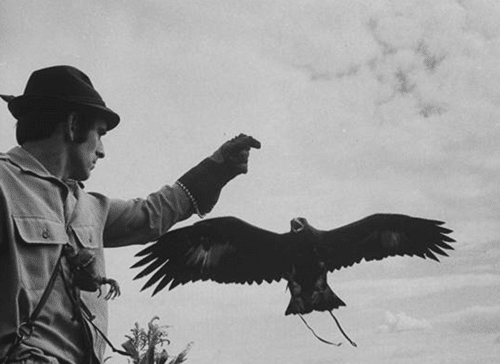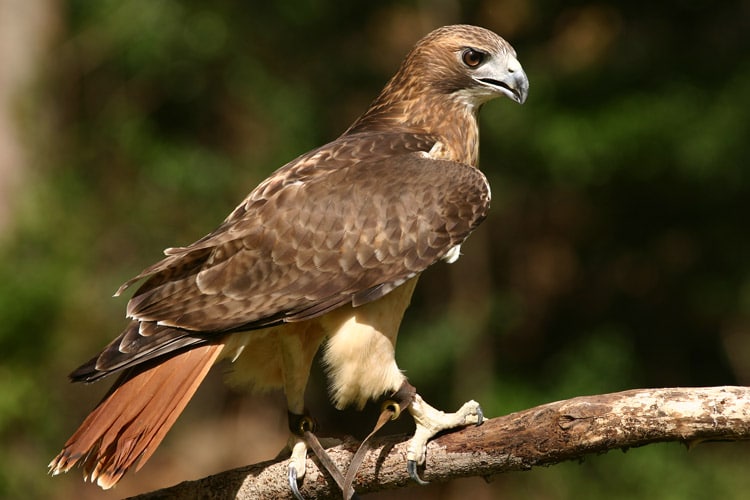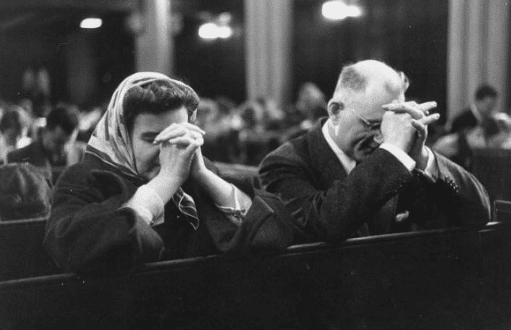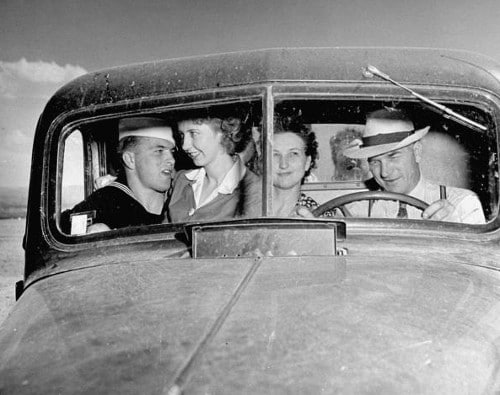
Editor’s note: This is a guest post from John S. Kunze.
Falconry doesn’t have to be reserved for medieval dukes and Saturday Night Live skits. Though it has dropped out of favor in our increasingly technological society, there are still many men who enjoy practicing falconry today. Some of my best memories from childhood are of me and my dad prowling dirt roads with our eyes scanning tree tops and telephone poles, looking for the figure of a hungry hawk. Falconry is a great way to reconnect with nature, make friendships with other men, and enjoy yourself.
What is Falconry?
Falconry involves capturing, training, and housing birds of prey for use in hunting. Yeah, you’re using a bird to hunt with. How awesome is that? Falcons and hawks are both commonly used. Falconers can capture birds in the wild or buy them from breeders. Details about effective and humane traps can be found in books and guides or learned from experts. Investing the time and effort to capture your own bird can be very rewarding. Specially bred hybrids and other hard to find birds can be obtained by purchase. The bird is trained in hunting and obedience, and then the falconer “flies” the bird, hunting game such as rabbit and quail. It’s possible to keep a bird just to fly, forgoing the hunting aspect, but not everyone thinks that this is appropriate. Raptors have an instinctual desire to hunt, and forbidding them do to so while keeping them captive can be seen as arrogant.
History of Falconry

There is evidence showing that falconry was practiced anciently in virtually every part of the world, and it predates writing altogether in many places. Falconry was practiced by Mongolian soldiers during military campaigns to supplement food sources between battles and to provide recreation. Falconry was used as a symbol of status in China and as a symbol of military prowess in Japan. Falconry was hugely popular in medieval Europe, where it was often integral to a gentleman’s education and enjoyed by both kings and common men. Shakespeare practiced falconry and mentioned it several times in his plays. Although falconry declined as the use of firearms became more popular in sport and hunting, there’s no reason why men can’t enjoy the sport today.
Birds of Falconry

Peregrine Falcon
Falconry utilizes a wide array of raptors. The most well known bird in falconry is probably the peregrine. The peregrine is the fastest animal on earth, capable of diving at speeds above 200 miles per hour. (Take that, cheetah!) Most beginners start with either a kestrel or a red tail hawk. Kestrels can be very problematic for beginners because of their small size. They weigh only a few ounces, and an inexperienced keeper can easily run into health problems or inadvertently kill the bird. Red tails are easier to care for and are very common in North America. They are generally preferred over kestrels as a first bird.

Red Tail Hawk
Getting Started
Once you’re set up, falconry is easier to practice than many outsiders may think. The hardest part is getting started, and this can indeed be daunting. You’ll need the following:
Proper licensing
Falconry is regulated in most places. In the U.S., your state’s Game and Fish Department can provide you with specifics. You can read the federal falconry regulations here. Elsewhere, contact your local game, wildlife, or hunting regulatory body for specific information. If there are no regulations on the books, falconry may not be legal in your area. In the U.S., both state and federal licenses are required to practice falconry.
There are three levels of licenses: beginner, general, and master. General and master falconers are allowed to select from a larger variety of raptors. These falconers can also keep multiple raptors, provided that all other considerations, such as housing, are in order.
In order to be issued a beginner’s permit, you have to pass a written test. A passing score is usually 80% correct answers or better. The North American Falconers Association suggests reading The Falconry Manual to prepare for your test. After obtaining a beginner’s permit, you’ll need to find an apprenticeship.
Apprenticeship
A beginner has to find an established falconer to sponsor them for an apprenticeship. If you know someone who’s a practicing falconer, that’s great. If you don’t, you can usually find a sponsor through organizations such as the North American Falconers Association. Apprentices generally have to start with a passager. A passager is a raptor under one year old that has already learned to fly.
Apprenticeships last two years, so be sure that you’re ready for the commitment before asking someone for his time and expertise. During this time, the apprentice should be educated about the techniques and ethics of falconry, gain some hands on experience, and hopefully build a friendship with his sponsor.
Proper housing
Raptors require a level of housing beyond that of pets and many exotic animals. Housing facilities for raptors are called mews. Mews are generally the size of a bedroom or large tool shed, though they may differ in size or detail according to raptor species or other considerations such as local climate variation and whether or not you feel it’s appropriate to house a raptor indoors if you have children. You absolutely cannot scrimp on proper housing for your bird; if you’re short on space or money, hold off on constructing or buying a mew until you have the proper room and resources.
Mews need to provide the bird with a place to perch, shelter from the elements, and adequate space. They can be either indoor or outdoor facilities. Most mews utilize a “safety chamber.” This is a small entryway with one door to the housing unit of the mew and one door to the outside. By allowing the falconer to properly restrain the animal when entering and exiting the mew, safety chambers prevent birds from escaping or harming themselves. They’re also a great place to keep equipment such as gloves and scales.
Mews are regulated by falconry laws and must meet both local and national requirements. If you are building your own, be sure that your plans meet all the requirements before beginning construction, unless you’re dying for a new tool shed.
Access to land
Raptors need to be able to fly and get exercise. Not only is it very boring trying to hunt quail in your front yard, but you might scare the kiddos to boot. It’s also cruel to keep them cooped up all the time.
Knowledge of how to care for a raptor
Keeping a raptor is not like having a pet dog. In fact, it’s not like keeping reptiles or songbirds either. This bird’s a different beast, and there are a number of things you’ll need to know. Needed information can be learned from books on the subject and/or from your sponsor.
Basic veterinary knowledge concerning raptors
You need to be able to tell if your bird is sick. You also need to know what to do if your bird does get sick. Again, this information can be obtained from books and practicing falconers.
Drive
Drive is the most important thing you need to get started in falconry. Becoming a falconer is a lifestyle decision. You have to be willing to invest the time and energy it takes to care for your bird. It takes some time to get into falconry, and you’re going to need some patience, but it can be very rewarding. Remember that the apprenticeship takes two years. The necessary knowledge is not common among other forms of hunting or animal keeping, so you’ll likely have to start with a pretty blank slate.
A raptor can’t be set aside for a few weeks or months while you take a break from falconry; it needs regular attention. But if you’re up to the challenge, you can learn a great and unique sport. Many species of raptors can live twenty years or longer, and it’s likely that you’ll build a relationship with your bird just like you would with a beloved family pet. Think about the looks of amazement your buddies will have when they come to visit and you greet them with a falcon on your arm.
Are you a falconer? Any other tips on getting started? Share your experience with us in the comments.







